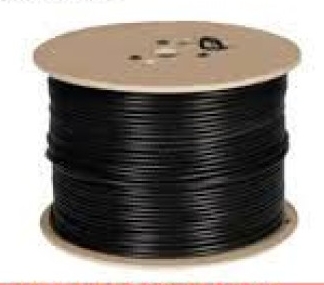
Coaxial cables are characterized by their concentric design, which includes a central conductor, an insulating layer, and a conductive shield, all within an outer jacket. They are commonly used for transmitting radio frequency signals and are known for their effective shielding, which helps prevent signal interference and noise.
Description:
Central Conductor:
A thin, solid or braided copper wire that carries the signal.
Insulating Layer:
A material like polyethylene (PE) or polyvinyl chloride (PVC) that isolates the central conductor from the shield.
Shield (Outer Conductor):
A metallic braid or foil that surrounds the insulation, acting as a grounding surface and protecting against interference.
Outer Jacket:
An insulating layer, often PE or PVC, that protects the cable from physical damage and environmental factors.
Specifications:
Impedance:
Coaxial cables are typically designed with a characteristic impedance, which is a critical factor for signal transmission. Common impedance values include 50 ohms for data and wireless communications and 75 ohms for video signals.
Attenuation:
The loss of signal strength as it travels through the cable. Lower attenuation is desirable for long-distance applications.
Shielding:
Effective shielding is crucial for preventing signal interference and maintaining signal integrity.
Frequency Range:
Coaxial cables are designed to operate within specific frequency ranges, with some cables being more suitable for higher frequencies.
Cable Types (e.g., RG-6, RG-59, RG-8):
Different types of coaxial cables are available, each with varying characteristics and applications. RG-6 is a popular choice for cable TV and satellite installations, while RG-59 is also used for cable TV. RG-8 and RG-11 are commonly used in radio frequency applications.
Connectors:
Various types of connectors are used with coaxial cables, such as F connectors for cable TV and BNC connectors for certain radio frequency applications.